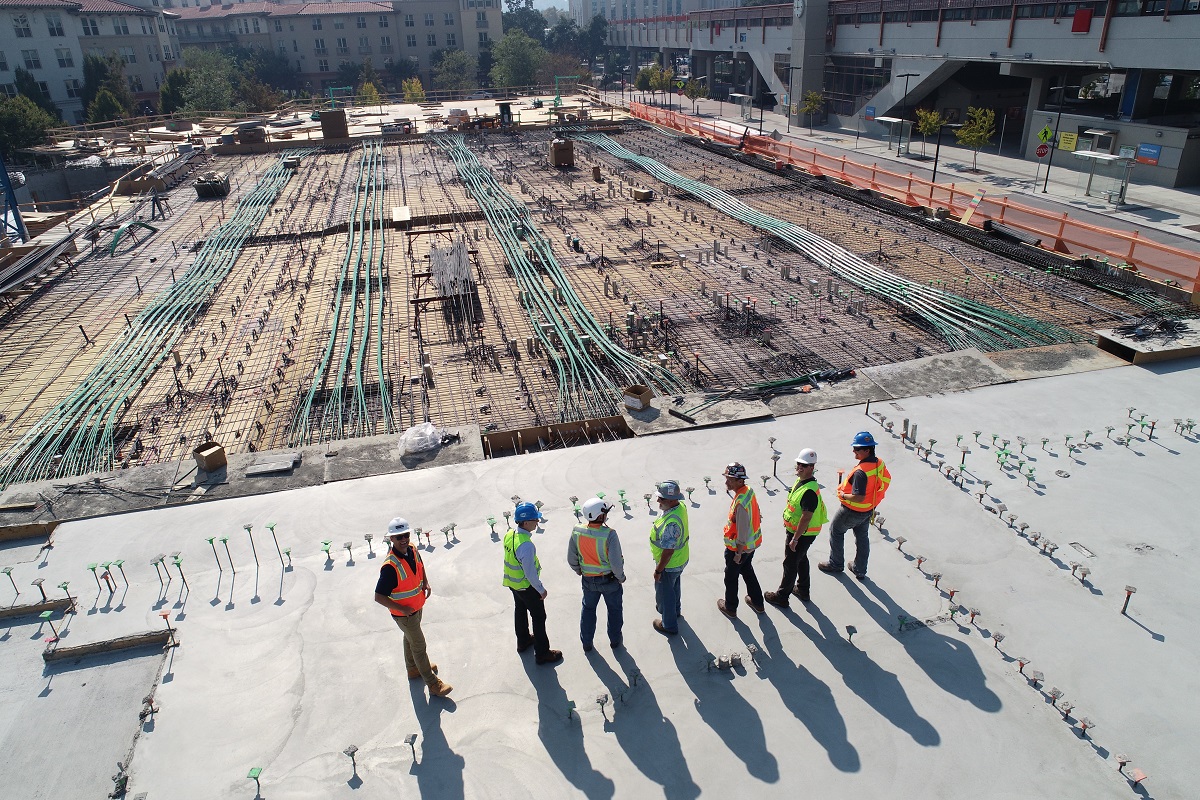What are the most essential features in construction management software?

Read below on the most essential features of construction management software.
A construction project is where contractors of different trades and skills work together to build something new. It could be a house, bridge, building, dam, road, tunnel, home improvements or remodels, or any number of other projects. Sharing ideas, schedules, documents, designs, drawings, and collaboration between the companies are top priorities for effective project management throughout its life cycle.
There are many items that require collaboration and a quick response from various parties involved in a project. Examples are Requests For Information (RFI), change orders, submittals, and punchlists, which are passed through each responsible party at successive stages until completion. Communication delays in the workflow of these tasks contribute significantly to projects overrunning their budgets and setbacks in the timely completion of various stages in the construction.
Cloud-based construction project management software is a boon to the construction industry, which allows owners, general contractors, contractors, and subcontractors, design teams, and more, to coordinate among themselves to efficiently drive projects from concept, to close out.
The following is a list of essential features available in construction management software:
Project directory
A construction project requires companies and contractors specializing in different trades to collaborate on executing the tasks in their line of work. A general contractor engages several subcontractors for different types of work like earthwork, steel structures, framing, masonry, carpentry, plumbing, electrical, concrete, mechanical, HVAC, drywall, and more. A project directory allows the general contractors to manage their subcontractors and vendors in order to appropriately assign tasks, and track progress and expenditures.
Scheduling
Proper planning and time-tabling of tasks are essential to completing them within the contracted time frame and budget. Construction project management software helps project managers create a schedule covering all jobs for the work assigned to the different types of contractors. They can set crew requirements, and define equipment and safety requirements, and then track them for timely completion.

Document repository
A construction project involves a large number of documents including contracts, bids, estimates, permits, plans, drawings, invoices, and more. Organized cloud storage enables all parties involved in the project to upload and share their documents to collaborate with everyone on the project.
Submittals
Subcontractors present details and specifications for the tasks and deliverables for which they are responsible to the general contractor, prior to the actual work. The general contractors, architects, and engineers review the submittals to check their compliance with the designs and structures and approve them for implementation. A construction project involves a large number of submittals. Construction management software supports the complete life-cycle of submittals, from the requests for the submittal, to tits timely approval.
Plan Markups
Workers of different specialties, like project managers, architects, and foremen, add markup and notes on plan drawings to highlight specific areas as required for the work, alterations, notes, and questions. Construction management software allows workers to digitally create those markups and share them with the appropriate people. For example, this is useful in RFIs, change orders, and punchlists to highlight the areas of interest and share with others, so they can see the comments in context
RFIs
During the course of construction, many questions arise from people involved in all levels of work. RFIs help contractors and subcontractors get clarification from the responsible individuals and organizations to eliminate ambiguity, make appropriate decisions, and remove any obstructions that occur in their workflow.
Change Orders
Alterations from the scope of the contract are inevitable at various points. Change orders are created for those alterations for a variety of reasons including requests from the client or owner, improvement in designs, choice of materials used, conflicts between plans and actual site conditions, availability constraints of materials, labor resources, and equipment and engineering questions. Construction management software allows contractors to create change orders, upload estimates, and obtain approval from the owner and add them to the schedule.
Daily Reports
Project managers obtain daily reports from onsite foremen regarding the crew attendance, work progress, site conditions, weather, safety incidents, and other important updates, to maintain a detailed record of the project. This is useful in keeping the project on track, and for future reference when questions arise.
Punchlists
Punchlists are created by the General Contractor project manager, architect, or owner, making inspections at the completion stage of the project. The lists include the parts of the task that were completed incorrectly or forgotten by the respective contractor firm or vendor. For example, the carpenter didn’t fix doorknobs, the plumber forgot to fix the leak in the water line inside the pantry, and so on. These punchlist items are routed to respective contractors to be addressed so the project can be completed.
Dashboard and reports
Many types of reports are generated for the contractors to view statistical information and keep track of the project progress, expenditures, deviation from the budget, deviation from the baseline schedule, and more. This helps them to take necessary measures to keep the project on track. Dashboards provide a summary of statistics and identify KPIs. In a multi-project environment, reports can be generated for a single project or a group of projects.
Real-time Communication
Some construction project management software solutions feature instant messaging that lets on-site and off-site workers collaborate remotely, discuss requirements, get clarifications, exchange images, plan-markups, and keep a line of communication open.
Payroll Management
Some construction project management software platforms feature payroll modules that enable accounting specialists to maintain a record of employees and workers and generate payroll for all people and companies working on the project.
Integration of Third-party Tools
There are many third-party applications and services available for various tasks in construction project management. Some construction project management software allows integrating required third-party services to gain access to features not included in their main offering.
While many of the platforms offer basic features like scheduling, RFIs, and change orders, not all construction project management software platforms offer all the features listed above. We prepared a complete list of top construction management software platforms for you here. Before choosing a platform for your business, analyze the features offered by different platforms and choose the one that satisfies your business size, needs, and use cases.
What do you consider essential features in a construction project management app? Tell us about it here.




